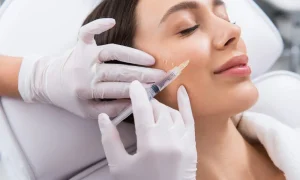Officers in the criminal justice system have a lot to do. From those we rely on in a medical emergency to those we trust to preserve justice, these professionals put in unremitting effort in demanding — and all-too-often thankless — professions. Is enough being done to safeguard both them and us?
A recent study found that the suicide rate among firefighters is higher than the incidence of deaths in the line of duty. In addition, hundreds of police officers kill themselves every year across the nation. It is alarming that suicide attempts and ideas have increased recently. They frequently arise as a result of trauma and psychological stress brought on by their jobs.
In these high-stress, high-risk positions, first responders are frequently put in perilous — and frequently life-threatening — situations. Their mental health could be harmed by physical wounds, dangerous circumstances, traumatic experiences, and a range of other factors. A few work-related issues that have been connected to poor performance include long work hours, physical stress, and insufficient sleep.
As a result of these incidents, 30% of first responders experience depression, PTSD, and other mental health illnesses, which is higher than the overall population’s rate. Even when they are not on job, the strain persists, and not everyone is affected equally. As a result of PTSD, police officers and other members of the public safety community may experience symptoms like drug addiction, wrath, anxiety, sleeping issues, and stomach issues.
Despite the fact that persons with PTSD have access to tools and therapy, mental health still has a bad connotation. Although this stigma still exists across the country, it is particularly severe in specific sectors. These institutional and cultural limitations frequently cause treatment to be postponed, leaving public safety officials to handle the issue on their own.
Thankfully, organizations are working to increase public understanding of the effects of mental illness on first responders who are currently serving and have previously served. More preventive and educative initiatives have led to an increase in support, counseling, and open communication.
Even while peer support is helpful, professional assistance is still necessary. There are several locations where you can get this kind of help. Although there are many free options available to public safety professionals, virtual support services are private. You can also contact groups that are staffed by people who are aware of the time and effort needed to maintain public safety if you need assistance.
To support our heroes in public safety and healthcare, we can do much more. We must all work together to increase awareness of mental health issues and reduce the stigma attached to receiving treatment for them. More details on how PTSD impacts public safety workers are available in the page linked.






More Stories
Enhance Your Culinary Experience: Pairing Cannabis Strains with Local Flavors
How to Choose the Right Cheek Filler and Factors to Consider?
How can you use 11oysters candy to create a romantic moment?